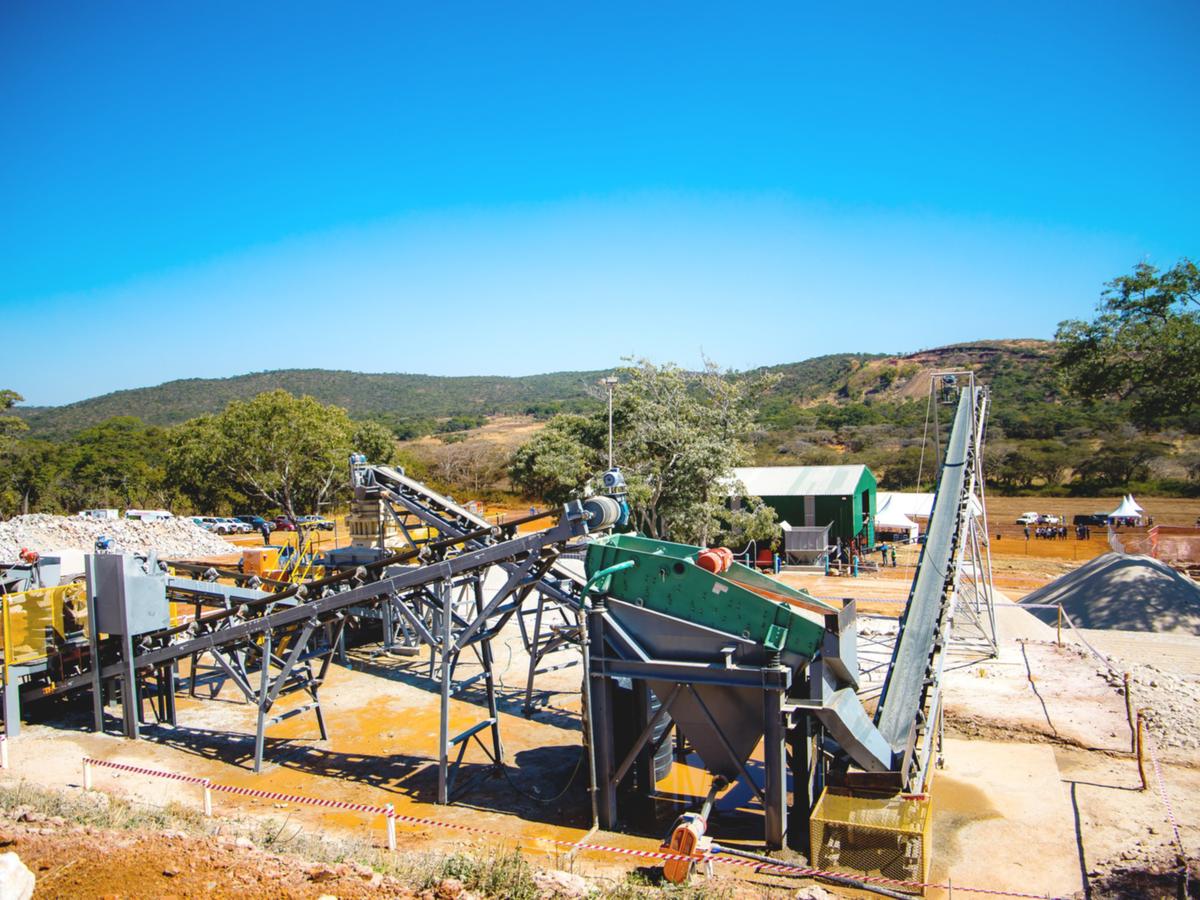CHINA is getting a head start in the global rush for lithium after several mining companies completed multimillion-dollar processing plants for the “white gold” in Zimbabwe.
Major Chinese companies, including Zhejiang Huayou Cobalt, Sinomine Resource Group and Chengxin Lithium Group, all completed the construction or upgrade of lithium processing plants in Zimbabwe last year.
The southern African country is home to one of the world’s largest hard rock lithium reserves, attracting Chinese companies in search of raw materials for lithium-ion batteries used to power a host of products from electric vehicles to solar panels.
This means that in the global transition to green energy, Zimbabwe’s lithium reserves are hot property.
Beijing currently controls the global lithium-ion battery industry, while it also dominates much of the processing of the mineral. To get the raw materials it needs, China has ramped up its procurement of lithium from Africa and elsewhere amid disquiet from Washington over Beijing’s grip on critical metal supply chains.
That grip got even tighter last year when African exports of lithium, which mostly go to China, rose sharply between August and November. That was when the companies commissioned processing plants for two products – mainly lithium concentrates spodumene and petalite – for export to China for further processing into lithium chemicals to make batteries and other electronics.
According to data from London-based price reporting agency Benchmark Mineral Intelligence, in the three months to the end of November 2023 Zimbabwean spodumene concentrate exports to China increased nearly five-fold to 177,000 tonnes (195,109 tons), compared to 38,000 tonnes in the same period of 2022.
But that was not a gradual rise. After the Chinese companies commissioned lithium processing plants in May 2023, exports began to increase, jumping from 16,000 tonnes in June to 36,000 tonnes in August. They then more than doubled to 84,000 in November.
Adam Megginson, a price and data analyst at Benchmark Mineral Intelligence, said 2024 is set to be an even bigger year, with several major projects due to come online which will see Zimbabwe’s lithium capacity triple compared to 2023.
At present, Megginson said, the facilities in Zimbabwe are producing spodumene or petalite concentrate which, while not completely raw products, still require further refining. This process, also referred to as beneficiation, then turns the concentrate into chemicals that can be used in the production of lithium-ion batteries.
“For these projects, this further processing is currently happening entirely in China, though there is strong political momentum – not only in Zimbabwe – towards encouraging more of this refining capacity to take place in the country of extraction,” Megginson said. “This is to capture more of the added value of this step in the process domestically.”

Most of the Chinese lithium producers operating in Africa, though, would rather continue to refine material in China, because doing so keeps their costs low, he said. Aside from the expense of constructing or improving refining capabilities in a different country, it is also harder to staff these projects with knowledgeable workers, while those people are readily available in China.
He said although Zimbabwe’s lithium raw materials capacity is growing rapidly, with Benchmark forecasting 196 per cent growth from 2023 to 2024, the country’s overall impact on the global lithium market is limited.
Megginson said Benchmark estimates the total size of the lithium raw materials market will be nearly 1.2 million tonnes of lithium carbonate equivalent (LCE) in 2024, and Zimbabwe will account for 6 per cent of this.
“While companies in other countries are also considering developing assets in Africa, China is currently a front runner on these developments,” Megginson said.
Benchmark forecasts that by the end of the decade, Africa will contribute a 14 per cent share of global lithium raw materials supply, up from a 4 per cent share last year.
In 2022, Zimbabwe banned exports of raw lithium ore, forcing companies to set up local factories to process ore into concentrates before export.
Then in November 2023, China’s Sinomine Resource Group commissioned the Bikita Minerals spodumene and petalite processing plants in the Masvingo province in southeast Zimbabwe. The spodumene plant is expected to produce 20,000 tonnes per month, while the petalite plant will produce 30,000 tonnes per month, compared to an annual output of 50,000 tonnes before the upgrade.
The Chinese mining company spent US$300 million on construction of the plants. In June 2022, Sinomine Resource Group paid US$180 million to buy the Bikita mine, which holds the world’s largest-known deposit of lithium at around 11 million tonnes. At the time of the sale, the mine, which started its lithium operations in the 1950s, was Zimbabwe’s only producing lithium mine.
Then last year, Prospect Lithium Zimbabwe, a unit of the Chinese mining giant Zhejiang Huayou Cobalt, commissioned a US$300 million lithium processing plant at the Arcadia hard rock lithium mine in the town of Goromonzi, 80km (49 miles) southeast of Zimbabwe’s capital Harare.
It has a processing capacity of 4.5 million tonnes of hard rock lithium, which translates to around 400,000 tonnes of concentrate per year for export. Huayou Cobalt acquired the Arcadia mine in 2021 for US$422 million from Australian company Prospect Resources.
Also, in May last year, another Chinese company, Chengxin Lithium Group, commissioned a 300,000 tonne per year lithium concentrator at the Sabi Star mine in eastern Zimbabwe.
In 2021, the company spent US$77 million on a deal that included mining rights in the largely unexplored Sabi Star mine. It spent US$130 million building its lithium processing plant.
Chris Berry, president of commodities advisory firm House Mountain Partners in New York, said Africa will have to become a major source of lithium supply in the future to restore long-term balance to the lithium market.
Unfortunately for the United States, Berry said none of the lithium that is forecast to be produced in numerous African countries would qualify as being compliant with America’s Inflation Reduction Act given that the US has no free trade agreement in place with countries such as Zimbabwe or Mali.
“I would think that the lithium mined and refined across Africa is destined to end up in China, given the substantial presence of Chinese lithium companies in some of the countries mentioned,” Berry said.
He added there is likely to be a significant ramp up of lithium production in Zimbabwe and, in the near-term, in the West African nation of Mali.
“This is likely to strengthen China’s hand in dominating the lithium supply chain, especially if the material is refined by Chinese companies,” Berry said.
Besides Zimbabwe, China has lithium interests in Mali, where Chinese company Ganfeng is partnering with Australian firm Leo Lithium in the Goulamina hard rock lithium project, in the south of the country, which is aiming to produce spodumene concentrate in the first half of 2024.
China also has interests in the DRC’s Manono lithium project, and in Namibia where the EU is vying to export rare earth materials to Europe. – —South China Morning Post




